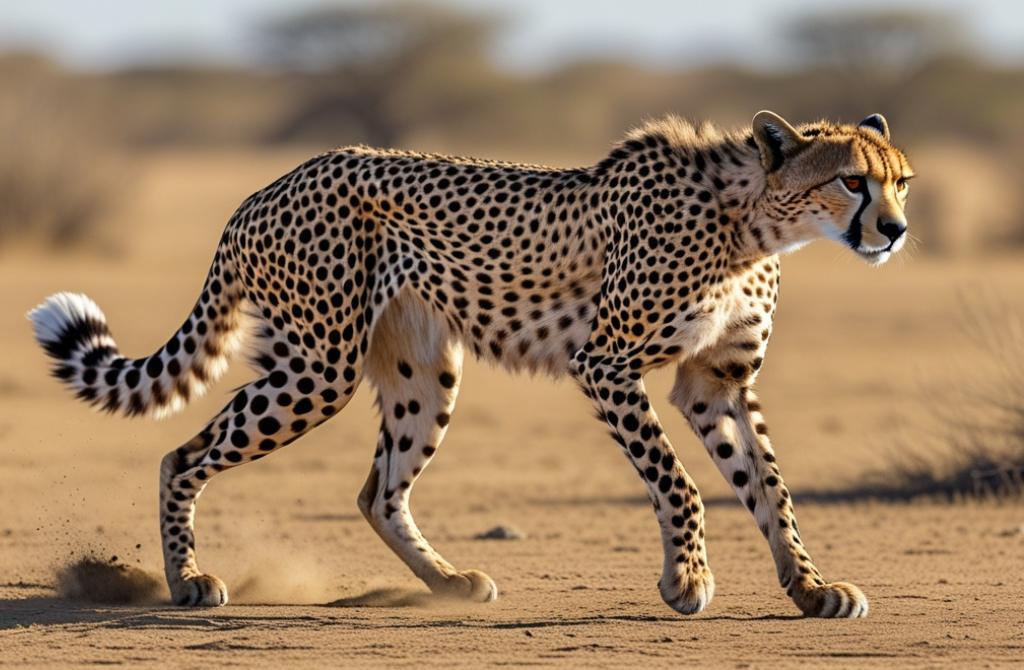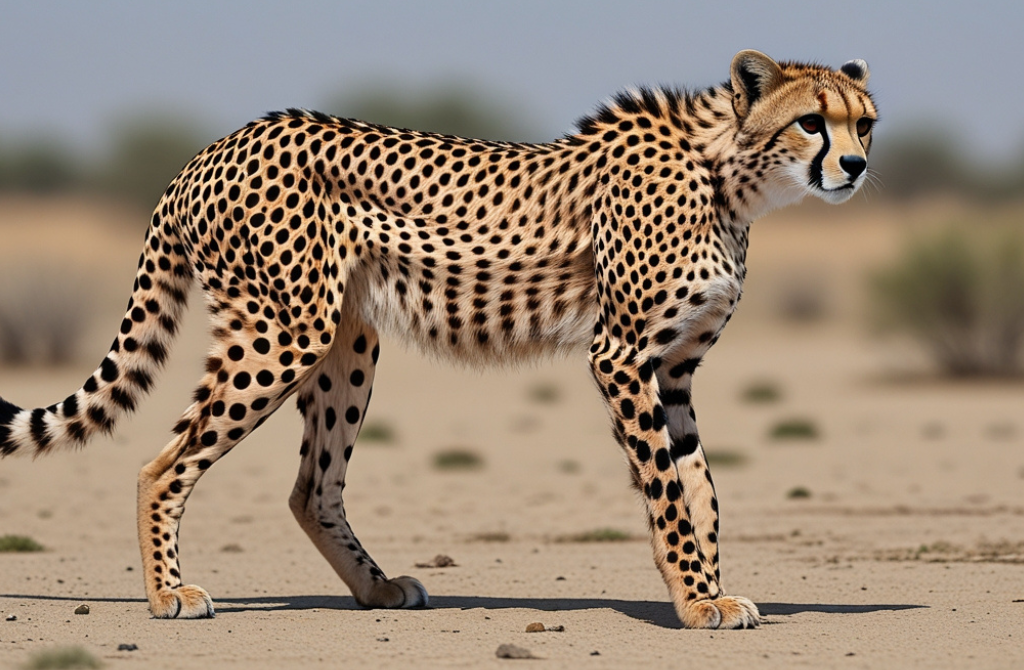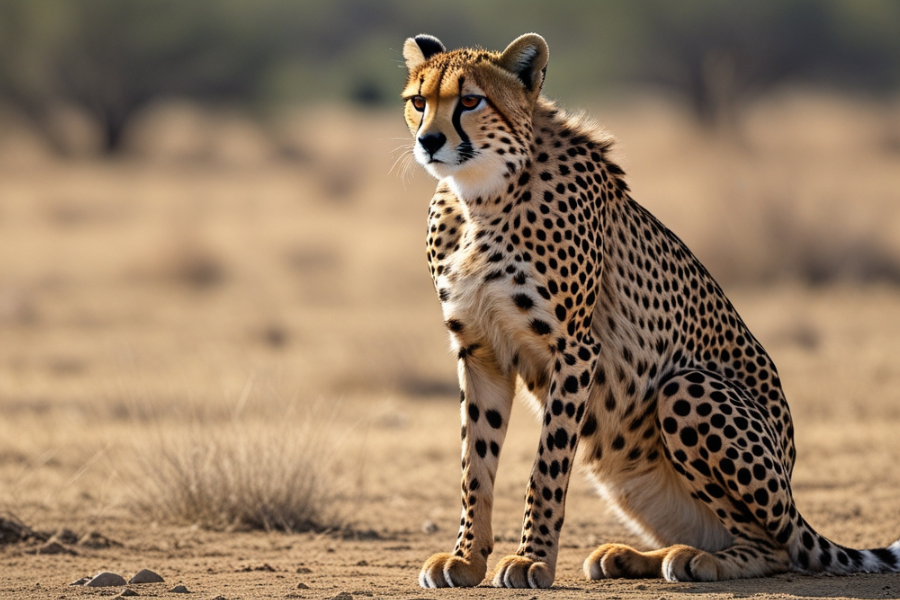A cheetah or can gepard solo sustain is an admirable hunter in the wild for its incredible speed and agility. But that having been said, this flipside of extraordinarily special capabilities gives rise to the crux of the issue: can gepard solo sustain make it through the wild? While all other big cats would typically rely on some form of trick-packs dynamics for hunting and survival, with the cheetahs, it is like solitary is the name of the game: from both hunting and survival perspectives, being alone becomes the sphere. But how sustainable is this solitaire existence?
can gepard solo sustain, we aim to show how and to what extent the beautiful creature can survive all by itself. A cheetah is surrounded by an aura of mystery when it comes to its hunting techniques through the continuous conundrum of energy demands as to whether it can actually be solo-friendly in the long run. The strain on a cheetah is medical on any claims pertaining to being solo in nature; rather, it comes under a sort of nature-nurture issue of survival instinct, adaptability, and environment-making or breaking their solo existence.
Table of contents
- Hunting Tactics of a Cheetah: A Solitary Pursuit
- The energy demands of a cheetah: can it hunt alone?
- The Role of Recovery Time in Cheetah Survival
- Some perils of which a solitary hunter has to be mindful of: Vulnerabilities.
- Prey availability and Environmental factors have great impact.
- Can the Cheetahs Survive Without Their Packs?
- Adaptations for Solo Survival: How Cheetahs Thrive Alone
- Cheetah- Territorial behavior-A solitary lifestyle
- Conclusion: can gepard solo sustain Truly Sustain Itself Solo in the Wild?
Hunting Tactics of a Cheetah: A Solitary Pursuit

To find out if the cheetah can survive alone, it is important to understand its hunting strategies. The cheetah is a solitary hunter that lives on speed and agility instead of teamwork of lions, wolves, and hyenas to catch its prey. The cheetah stalks at distances becoming very close to its prey before making a high-speed sprint.
This mode of attack is short-lived and demands great recovery afterward. After waiting to stalk abandon with great patience and eye, the ceding of vision is to make them close enough. And once they feel that they can take their prey, it is an acceleration often reaching at least 70 mph (113 km/h). This spectacular sprint lasts only some 20-30 seconds while the cheetah usually tries for another attempt at a kill.
This method of solo hunting is very effective in hunting smaller to medium-sized prey such as gazelles, but such a hunt can exact a heavy physical toll on the cheetah. The cheetah usually sweats a good deal of energy in each hunt, which may sometimes leave it completely drained after a successful hunt. This presents a constant dilemma for the question of whether the cheetah can survive solo, as it has to continually and continuously expend energy in its hunt in order to survive another successful venture. This generally solitary hunting style also adds another nemesis: the scavengers, which chiefly comprise hyenas and vultures that come in to stake its rightful claim and steal away its hard-earned kill, thus adding to the twisting forces of survivalism in solitary.
The energy demands of a cheetah: can it hunt alone?
The energy demands exerted by such a high-speed dash in hunts, thus, are among the major factors affecting the hunting capacity of the cheetah in a solitary sphere. A cheetah’s unchallenged capability to start speedily up to the maximum of any land mammal consumption requires vast energy. Such a quick launch results in exhausted energy in the cheetah, thus requiring enough resting time in recovery after each chase.
With hunting differently on their minds because of their relatively larger sizes, cheetahs are required to be capable of high efficiency, such as lions. Each sprint counts in terms of the hunt’s success. After capturing its prey, a cheetah’s body usually needs to relax, for 30 minutes to an hour, for some time after the chase is finished. Much of the other scavenging carnivores within such time might get a chance for kites.
These high metabolic rates and high energy-consuming hunting strategies highlight the vulnerabilities that the cheetah faces as a hunter when hunting alone. Such an animal will certainly hunt on its own, but must carefully assess whether sufficient food will be available for subsequent chases so that it can replenish the lost energy. Thus, it must combine efficient hunting into the background of constant energy drain through its hunting strategy in order to survive in the wild.
The Role of Recovery Time in Cheetah Survival
However, after the successful hunt, the cheetah has yet another major trouble they face: the level of energy replenishment. Unlike the other big cats that rely on endurance or pack hunting, cheetahs have to stop to recover from every short sprint to the prey. This process is essential for preventing exhaustion and for the next sprint into another hunt; they are, however, open to attack by opportunistic scavengers like badgers and vultures.
Cheetahs rest for half an hour or more after a successful hunt to get their temperature down and replace their losses of energy. This recovery time, extremely necessary, makes solitary survival difficult. Because they do not have the support of a single pack backing them during their kill, or in bringing down bulkier prey, they remain highly vigilant of any intruding threat while in their defensive if vulnerable state of recovery.
This recovery time emphasizes the energetic costs of the cheetah’s hunting style and illustrates why it is difficult for them to subsist solo over extended periods. The cheetah’s dependency on smaller meals varies considerably from one or two huge meals, which also affects the difficulty of maintaining solitary status.
Some perils of which a solitary hunter has to be mindful of: Vulnerabilities.
Whereas a cheetah has developed excellent solo hunting abilities, it can also be said that there are a few risks attached to it which make long-term survival difficult. Competition from other predators is one of the top risks. Cheetahs, although they are undoubtedly faster and more agile than most other predators in their territory, are not the only ones. Lion, hyenas, and leopards share hunting grounds, and these other predators do not shy away from snatching away the cheetah’s kill.
On top of competition, cheetahs have to face an additional risk of injury in high-speed chases. If there is a threat of muscle injury due to a high strain on cheetah’s muscles during a sprint, then the muscle injury or joint injury can lead to loss of the hunting opportunity as well as the inability to recuperate quickly. Such injuries can create serious problems for cheetahs hunting alone because they do not have the option of resting and recovering cooperatively and thus cannot be treated as a pack of dogs would.
While it allows the cheetah to survive for short durations in a stand-alone manner, injuries, competition for food, and vulnerability to scavengers demonstrate that sustaining alone continues to be a multifaceted activity.
Prey availability and Environmental factors have great impact.

The availability of prey is very crucial for a cheetah that lives alone. Cheetahs depend on medium-sized ungulates like gazelles, impalas, and springbok, not only for food but as species to hunt. In such regions where there is prey in sufficient and stable populations, the chances of cheetah hunting and subsisting satisfactorily are higher by far.
Cheetahs in habitats with minimal or low populations of prey may face competition for food. The other way that, in addition to these, seasonal fluctuations and climate alterations could play a major role in the migration and decrease of prey availability. Should prey become too poor, therefore, cheetah will either have to extend their hunting areas and expose themselves to several risks or reduce their energy expenditure; the latter of course undermining their chances of securing sufficient meals.
Thus, the environmental factors within a cheetah territory significantly affect its ability to live as a solitary animal. Cheetahs are quite comfortable living alone in high prey abundance and low competition with larger predators, and absence of these render a solitary existence of the cheetah much harder.
Can the Cheetahs Survive Without Their Packs?
It is well known that no support structure prevails with cheetahs as there is in lions or wolves. It leads us to the core question: can they truly live without reading on their pack members? Solitary animals by characteristic, cheetahs can pursue very small prey and journey quite a long distance on their own. However, being on their own sometimes means being at a bit of a disadvantage.
Support groups mean that cheetahs must rely solely on themselves to defend their kills and stay away from danger; hence, the presence of larger aggressors may take away any food prepared by a cheetah. In the wild, therefore, losing its kill to poachers who rely on humans and environmental degradation will almost guarantee the cheetah starvation.
Aging challenges, after all, have seen cheetahs learn to be successful solitaries. The males tend to have territories while females roam wider-ranging areas, particularly when raising their cubs. Resultantly, within territories replete with food and a minimum of large predators, such a life is adaptive on the part of the cheetah; yet in the presence of greater competition- survival becomes extremely difficult.
Adaptations for Solo Survival: How Cheetahs Thrive Alone

While definitely presenting an array of challenges for another predator, the cheetah is aptly suited to live alone. Their independent life has been forged from centuries of unique mechanisms that enable them to survive in the wild without the assistance of a pack.
- Speed and agility: A fusion of an excitable yet slender body and special muscles has made the cheetah the fastest animal on land. This gives it ample advantage to quickly catch on to its prey and avoid being hunted by other large or dangerous predators.
- Enhanced senses: The keen eyesight of a cheetah is the primary asset to spot prey from a long distance, with a sound sense of hearing and smell that can equally detect any potential threat as well as opportunities.
- Minimal requirements for survival: Smaller and more frequent meals serve the cheetah to meet energy levels to hunt prey, while the other heavier predators in the same habitat eat a bigger meal.
These adaptations permit cheetahs to live alone even in challenging environments. But there are other factors, such as the existence of an abundant prey and less competition, that work to make such an independent living a success.
Cheetah- Territorial behavior-A solitary lifestyle
The nature of territoriality displayed by Cheetahs is totally distinct from that before lions and leopards. Males defend smaller and exclusive territories, while females roam larger areas that are not strictly bounded. This territoriality enables cheetahs to maintain control over access to hunting grounds and resources critical to their communal tenure alone.
However, for Cheetahs, being territorial has its important challenges. They have to be on constant lookout for intruding neighbouring male cheetahs or potentially dangerous rivals. Maintaining territory may involve a great deal of time and effort and energy to keep land under their claim. Disputes with rival cheetahs or other predators over territory can also lead to injuries, therefore compromising the cheetah’s ability to be a solitary predator.
Conclusion: can gepard solo sustain Truly Sustain Itself Solo in the Wild?
Conclusively, the pressing issue of whether a can gepard solo sustainably survives in the wild can’t be singled out; but requires the consideration of both the particular adaptations of the cheetah and the challenges performing the functions of a solitary hunter. The remarkably great hunters of cheetahs, with their finely tuned structure for speed and the ability to maneuver allows these animals to survive as far as a certain number of preconditions are met. These preconditions include but are not limited to, the availability of prey, the level of competition from larger predators, and the gepard’s immediate recovery from sprinting.
Cheetahs are known to hunt alone and are well adapted to manage the stress of high-speed chases; however, that need for frequent recovery, and risk of losing prey to scavengers makes a solitary life rather a precarious existence. Yes, of course, they can sustain themselves solo under favorable environmental conditions where there is sufficient prey, and competition is minimized; nevertheless, this solitary lifestyle does come with its challenges.
Overall, the ability of the can gepard solo sustain in the wild depends on the very delicate but, interactive equilibrium which ensures its own survival. As long as prey is available and environmental conditions are otherwise favorable, cheetahs can readily survive on their own. Where these necessary conditions do not prevail, the ability of cheetahs to survive as solitary individuals lessens to a large degree.
Impact-Site-Verification: 53f48982-3412-411c-b562-56d9e951514d


One thought on “The Ultimate Question: can gepard solo sustain in the Wild by Itself?”